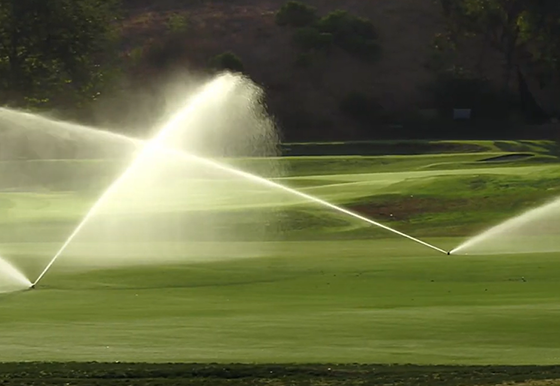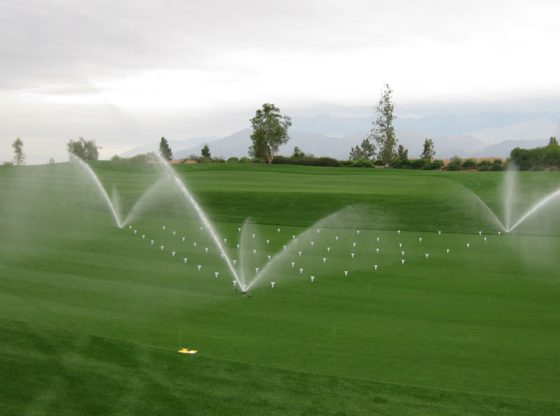Crunching the Numbers
 The average non-capital operations budget increased from $697,000 to $750,000, an increase of 13.2 percent. Looking back to 2012 and 2013 the average maintenance budgets were $651,392 and $622,500. Just over half, 52%, of the superintendents saw maintenance budgets increase in 2016, leaving only 6% to cut back.
The average non-capital operations budget increased from $697,000 to $750,000, an increase of 13.2 percent. Looking back to 2012 and 2013 the average maintenance budgets were $651,392 and $622,500. Just over half, 52%, of the superintendents saw maintenance budgets increase in 2016, leaving only 6% to cut back.
In the evaluation, 18 items are included in the budget. This year, 12 of which experienced spikes, including all forms of pesticides and fertilizers. This year the highest budgeted item was for mowing and equipment, reaching $42,800. Compared to the 2015 highest budgeted item of fungicides at $34,100. The lowest budgets were set for handheld equipment and aquatic weed control both years. Irrigation, fuel and energy were also among the top budgeted items.
This year was also a good year to replace and fix equipment, the biggest budgetary rise being in mowing/cultivating equipment. The average course spending reached $42,800 on iron in 2016 compared to $31,300 in 2015.
Quality wasn’t an issue this year. Forty-three percent of superintendents reported being very confident in their resources to produce a quality product. Their confidence reached to their maintenance departments. A mere 4 percent said they “not confident at all.”
We all know how competitive golf courses are. It is necessary to survive to not only keep your facility in prime condition, but also with industry updates to stay ahead. It makes since that the average facility devoted $94,500 to course improvements this year. Although this is a 31.5 percent decrease from 2015. Only 3 percent of superintendents indicated their facilities spent more than $500,000 on capital improvements this year.
A Look at Superintendents
The golf course industry has a perception that superintendent have a short shelf life. In contrast, the average superintendent has held his or her current position for 12.2 years.  Only 9 percent of superintendents have been fired for job performance reasons. There are more long term superintendents than you think. Actually, 17 percent of superintendents have held their current position for 20 or more years. The industry survey also reflected that most superintendents are satisfied with their respective jobs. If given a opportunity to change their career, 76 percent said they would still pursue a job in the golf industry.
Only 9 percent of superintendents have been fired for job performance reasons. There are more long term superintendents than you think. Actually, 17 percent of superintendents have held their current position for 20 or more years. The industry survey also reflected that most superintendents are satisfied with their respective jobs. If given a opportunity to change their career, 76 percent said they would still pursue a job in the golf industry.
Although they work on a golf course, it doesn’t mean they play. Less than one-third of superintendents (27 percent) play golf once or multiple times per week. Plenty of superintendents are watching their clubs collect dust, as 34 percent indicated they play less than monthly or never.
When asked how satisfied superintendents are with their job they responses were overall positive. An over whelming 96% said they enjoy working outdoors as part of the job. The satisfaction for interaction with co-workers was also high, at 84%. Satisfaction with networking, benefits, hours and pay all hoovered around 50%. So, why do your job if you don’t enjoy it? These results demonstrated overall happiness in this industry. But, to take it a step further, 48% believed passion was important for career success.
Diving into the Industry
 Many view the industry as growing. Just like for any industry though, there are falls and inclines in profit. According to the survey 38% characterize the financial condition of the golf industry as doing very well, 37% saw it as just doing well. There is a continual struggle to keep courses profitable, but numbers show an increase in profitability of courses each year.
Many view the industry as growing. Just like for any industry though, there are falls and inclines in profit. According to the survey 38% characterize the financial condition of the golf industry as doing very well, 37% saw it as just doing well. There is a continual struggle to keep courses profitable, but numbers show an increase in profitability of courses each year.
Three-fourths or 75% of superintendents listed attracting younger generations of players as their biggest industry concern for 2016. In addition, 42% also placed attracting younger workers to their list of industry concerns. Other significant concerns for 2016 included rising golf course expenses at 55 percent and unrealistic member/customer expectations at 42 percent.When asked, “who’s responsible for finding younger players and workers?” Superintendents responded with the following: Facilities (79 percent), PGA (78 percent) and USGA (77 percent).
Although budgets are increasing, 73 percent indicating that filling open positions with qualified candidates is more difficult now than it was three years ago. A mere 3 percent of survey respondents are having an easier time filling positions with qualified candidates. General labor positions, which account for the largest percentage of the golf course positions, are the more difficult to fill. Although workers may come along, 73 percent of superintendents list those positions as being difficult to fill with qualified candidates.
Second most difficult is a mechanic, with 32 percent of superintendents indicating an issue.On the other hand, when superintendents are forced to cut crew sizes, general labor spots are the positions most likely to be eliminated. This makes filling the position even more difficult. Fifty-three percent of respondents have been forced to eliminate at least one crew position in the last three years. Average maintenance staff size has stayed consistent between 2015 and 2016.
In conclusion, the golf industry conditions are improving but not perfect. Budgets are improving along with expectations. Although, just as in the rest of the green industry, finding good workers is a growing struggle.












